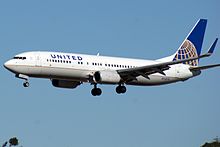印刷業界の方、よかったらFacebookなどシェアで拡散してください。
下記の論文は1994年当時にURLから推測してイリノイ大学がEPA=アメリカ環境省(アメリカでは日本の省庁の縦割り制度と異なり、環境省のなかに経済を推進する部門がある。)の統計数値などをもとに作られたのだろう。筆者が不明なのが残念である。
下記の論文の話の前に、当時の様子を解説する必要がある。その頃、最低でも数千万円するオンデマンド型デジタル印刷機が世の中(アメリカ、ヨーロッパなど)を席巻し始めていた。トナーを使った巻取り型8色機のクロマプレス、毎時1000枚印刷可能だったカット紙タイプのE-print1000、CTPが内蔵したオフセットオンデマンド水なし印刷機Quickmaster-DIなどが印刷業界のど肝を抜いた設備として紹介されていた。
一方で、日本ではまだマッキントッシュが印刷業界において正位置を獲得しておらず、「使いものにならないオモチャ」としての評価であった。写植や製版などアナログが全盛時代で、そんな使いものにならない設備を投資する会社は希少であったし、クライアントもまた望んでいない企業が多かった。
しかし、オンデマンド型デジタル印刷機から「プリント」を実行するためにはマッキントッシュが最も相性が良く優れていたので、時間がマックの評価解決することは明白であった。
ちなみにこの時期、弊社ではアメリカ視察ツアーを実施している。未来の印刷業界がどう変革するのかを実際の目で確かめるための視察だ。当時は10人足らず。出力センターとして生きているべきか? 印刷機を導入していくべきか? デザインなど社名の通り前工程に特化していくべきか? 大きな決断を迫られていた。そして、視察の成果もあって98年にE-print1000、99年にQuickmaster-DIを相次いで導入した。
是非、皆さんも1994年当時の会社を振り返ってみてください。オフセットなどの印刷設備、人、インターネットのインフラの有無、マッキントッシュ、アナログ製版など当時のリソースが印刷業を物語ります。懐かしい当時が蘇ってきます。
論文の内容についての要約は、長文のため次回ブログに回します。
The U.S. Domestic Printing Industry
Who is the bigger employer in the United States, the printing or the automotive industry? If you guessed printing, take a bow—an $83+ billion bow. Yes, believe it or not, in the US, printing isn't just big business, it's the biggest. Printers employ nearly 1 million people across the country, placing the meager 780,000 in the auto industry a distant second. Sounds pretty outrageous until you stop to think about it. In a society that's constantly in search of access to information and literally obsessed with record-keeping, it stands to reason that printing is ubiquitous. From new car manuals to tabloid newspapers to t-shirts to those little tags on mattresses, nearly every product calls on the printing industry somewhere along the line. Put in that light, the numbers don't seem quite so farfetched. So the big question is, if it's such a big industry, how come we've never noticed?
The relative invisibility of the industry is due primarily to the nature of the business and the way it has evolved. To understand how the industry works and how to effectively target printing facilities for pollution prevention programs, we need to understand who they are, what they do, and perhaps most importantly, where is everybody?
According to the 6th Annual Report to Congress by the Printing Industry of America (PIA), printers are defined as: "Those firms engaged primarily in commercial printing, business forms, book printing, prepress services, quick printing and blank books and binders." This definition does not include firms mainly involved in publishing. Figure 1 (PIA, 1994) illustrates the economic breakdown of the industry into these seven major areas. Before the screaming begins, according to USEPA data, letterpress really did account for 11 percent of the economic market and screen only 3 percent. However, of all the major printing processes, screen printers are the most undocumented. So, in this case, 3 percent is the number that can be physically established.
Figure 1. From: 6th Annual Report to Congress: Printing Industry. Printing Industries of America, Inc. 1994.
For the purposes of this report, printers are defined by the Bureau of Census' Standard Industrial Classification (SIC) 27. A word of warning about SIC codes might be in order at this time. Anyone who has attempted to use them has no doubt found them to be vague at best and just downright obsolete at worst. SIC 27, Printing, Publishing, and Allied Industries, is unfortunately no exception. While this definition of the printing industry is similar to the PIA's, it doesn't necessarily include firms engaged in fabric and textile printing (largely a screen process), manufacturers of products containing incidental printing or circuit board printers. But, it could. Broad headings and subjective interpretation of various industries leaves the SIC codes open to a great deal of confusion when it comes to actual statistics. It's often difficult to determine what counts under SIC 27 and what doesn't.
There is some good news on the horizon. Even as this manual is heading towards publication, efforts are underway to clarify and to expand SIC 27. In particular, screen printing will be given two separate listings. So, hopefully, two or three years down the road will see a new, improved SIC 27 that will make it much easier to get a numerical handle on printing in the United States. However, for the moment, and for this overview, the current SIC 27, confusing as it may be, is it.
This sort of uncertainty about the codes leads to some large statistical ranging, depending on the source consulted, and what the authors chose to classify under which SIC. But it should be kept in mind that these numbers, while not necessarily deadly accurate, still serve to illustrate the magnitude and the diverse nature of the industry. Also, it's good to note that, if anything, the numbers quoted here
underestimate reality. So, while the 1994 SIC 27 may leave out a potentially sizable number of printing operations, it still provides plenty to keep everyone busy for some time to come.
SIC 27 is made up of firms printing by the five most common processes (lithography, screen, flexography, letterpress, and gravure) as well as newspaper, book and periodical publishers (whether or not they do their own printing). The primary focus of this manual is on the five processes mentioned above. They account for about 97 percent of the economic output in the domestic printing industry (US EPA, 1994), and by necessity, are the first step to anything else in SIC 27. (Bookbinders may have their own pollutants, but they can't do much until someone has printed their books.) Figure 2 shows the financial breakdown of the industry by process-type.
Figure 2. From: US EPA Printing Industry Cluster Profile, 1994, p. 5
At the moment, a number of alternative printing processes and technologies are in use and being further refined and developed. These include various electronic, thermographic ion-deposition, ink-jet and Mead Cycolor printing processes. While these newer methods currently account for about 3 percent of the market, their share is expected to be nearer 20 percent by 2025 (US EPA, 1994). Also afoot are numerous "paperless" publishing and recording technologies. It's not inconceivable, given the increasing popularity of the "information superhighway" and new computer imaging and transmitting equipment, that a net-reduction in printed materials could eventually impact the industry. However, that appears to be a few years down the road, at the very least, and until that comes to pass, there is every indication that old-fashioned printing will remain a very growing concern.
Various estimates place the number of printing establishments in the US somewhere between 60,000 - 70,000. However, these estimates are thought to exclude most-to-all of the 40,000+ plants with screen presses, placing the total nearer to 100,000 facilities.(US EPA, 1994). Apparently, screen printers are even more difficult to put a finger on than are the others. So, with that in mind, be warned that many of the numbers in this chapter should be considered suspect in terms of the impact of screen printers. Figure 3 illustrates plant distribution by press/process-type.
Figure 3. From: US EPA Printing Industry Cluster Profile, 1994, p. 15
Interestingly, while the industry does account for a significant share of the nation's total volume and goods, services and employment, at the same time, it is the ultimate small business. Nearly 80 percent of the printers in the US employ fewer than 20 people. While there are some printers dealing in national and international scope, most serve local or regional markets. This is an industry largely populated by small, neighborhood shops, rather than sprawling multi-acre industrial complexes. You just don't find that many printing plants employing 20,000 people.
Of the operating plants in the US, about 46 percent have fewer than five employees, 24.5 percent have between five and nine, and 14.1 percent have between ten and nineteen. Roughly 12 percent employ between 20 and 99, leaving less than 3 percent of all printers in the country employing more than 100 people. Figure 4 shows the distribution of plants by number of employees. This distribution of employment size matches fairly closely with the type of presses in operation. Gravure and flexographic plants tend to be the larger operations. Over half of the flexographic and about one-quarter of the gravure shops employ more than 20. The majority of the shops utilizing letterpress, lithographic and screen presses fall in the under-20 category (US EPA, 1994).
Figure 4. From: US EPA Printing Industry Cluster Profile, 1994, p. 18.
The conclusions, with regard to pollution prevention efforts, drawn from this section should be pretty clear. The majority of the shops that need assistance aren't going to be multi-national conglomerates with the corresponding resources. Odds are, the average
printer is running a lithographic or screen press, employing less than 20, and quite probably, working on a thin profit-margin, without vast pools of cash available for major capital improvements or process reengineering. Knowing the profile of the individual operation will help identify the psychological approach that will be most effective, as well as the technical considerations.
At this point, we have a good idea of who constitutes the US printing industry and we know that there are thousands of printers out there. However, we still don't know where they are hiding. With the majority being so small, they could turn up just about anywhere. And, in fact, that's almost exactly the case. From Alaska to Wyoming, you will not find a shortage of printers. In fact, every single state has at least one plant employing over 100 and hundreds of smaller plants. But, if you want to play Pin-the-Tail-on-the-Printer at a party, ten states stand out above the rest.
California, New York, Illinois, Texas, Florida, Pennsylvania, Ohio, New Jersey, Michigan, and Massachusetts by themselves account for more than 60 percent of the entire industry. The top three alone are home to over 1/3 of all the plants. Figure 5 shows the ten states by their percentage of the total.
Figure 5. From: US EPA Printing Industry Cluster Profile, 1994, p. 10.
The US domestic printing industry is an entity unlike almost any other. It's the largest employer-one of the largest in terms of economic output-and, if you were to judge by the response of the average person on the street, the printing industry maintains a profile so low that it just about disappears from sight. Instead of a rampaging giant of economic clout, it's a diverse, dispersed swarm of small businesses. The average printing facility is small (<20 employees), probably runs a lithographic or screen press, and has a better than average chance of finding itself in one of ten particular states. But, it could also be 120 people running gravure presses in Nome, Alaska. Probably more so than any other industry of comparable size today, printing is a quickly shifting, unpredictable business.
The US printing industry is nothing else, if not proof of strength in numbers. They don't take up lots of real estate. They aren't generally the major employers in a given area. Individually, they are usually not a major environmental concern. But, when you examine the industry as a whole, you face an entirely different animal. Comprised of thousands of small, independent units, the printing industry employs nearly 1 million in some 60,000-100,000 plants and accounts for somewhere in the neighborhood of 100 billion dollars in business every single year, while at the same time, contributing to toxic air emissions and solid and chemical waste problems on an ever-growing scale. It's too big to be ignored on all fronts, economic, social and environmental.
Looking at each plant individually, it might not seem like the average printer is responsible for all that much pollution. However, whether that assumption is grounded or not, 100,000 individual sources of VOC emissions, petroleum ink wastes, and various types of waste chemicals can add up to a very considerable problem in a very short time.
Unfortunately, the diversity and wide-spread dispersion of the printing industry contributes to its economic survival and viability, and creates a number of sticky logistical problems in bringing wholesale pollution prevention and waste management to the entire industry. With some 100,000 shops operating in nearly every corner of the country, there is, at present, no "short-cut" access to the industry as a whole. Simply reaching these plants presents an enormous challenge, to say nothing of the other factors, such as size, financial situation and location that will also have considerable influence on any pollution prevention strategies that might be suggested.
Facing that and knowing that the printing industry is projected to grow by 3.8-5.3 percent annually during this decade (US EPA, 1994), the environmental problems created by the printing industry aren't going to disappear on their own and without action, will simply become that much more unmanageable each year.
Regulatory and legislative actions may come about, but the size and distribution of the industry again will insulate it from much of this. It's simply not possible to effectively regulate and monitor this many institutions. Printers are going to have to decide on their own that pollution prevention and waste management can be an environmentally and economically productive innovation. Like any other industry, the most effective policing method isn't a regulatory agency, but the bottom line. Nothing motivates like the prospect of increased profits. Skilled technical assistance with a feel for the requirements and conditions of the printing industry is one of the most promising routes to this re-education process.
This is still no quick fix. There is no such thing, at least not to be found under SIC 27. Faced with such overwhelming numbers, even directed technical assistance efforts targeting the industry will initially be a shotgun approach. But, with personnel armed with a little background about the printing industry and some practical knowledge of the various major processes, odds are good that some successes will be achieved. This should lead to a snowball effect. The successful shops that implement new and more efficient techniques will lead others in the right direction.
It's not possible to overstate the value of understanding the printing industry as a whole--what are each individual printers' characteristics, how do they do business and what are their limitations. Going into a technical assistance visit with only an understanding of how the press works, you can make suggestions that will be quite effective in theory,
but only by understanding how the printer works, can you make suggestions that are going to be practiced.
PIA, "6th Annual Report to the Congress of the United States: Printing Industry." 1994. Printing Industries of America, Inc.
The PIA report to Congress provides a very brief overview of the US printing industry, including statistics on wages, composition, and employment. It also offers a cursory discussion of future trends in the industry and a short glossary of new technological terms.
US EPA "Printing Industry and Use Cluster Profile." 1994. Regulatory Impacts Branch, Economics, Exposure and Technology Division, Office of Pollution Prevention and Toxics, US EPA, Washington, DC.
The US EPA cluster profile offers a little bit of everything, although its main purpose is a thorough statistical examination of the US printing industry. From explanations of the major technologies and new technologies and a look at upcoming industry trends to lists of chemicals used, this book is a good introduction to the technical side of printing. In terms of statistics, from values of exports, to payroll by state, to the number of actual presses of any given type, this book is hard to beat. Unfortunately, the value of these numbers is tempered by their age. Much of the data presented is from the mid-to-late 1980s and is possibly dated by this time.
上記の文章をgoogle自動翻訳したものをつけておきます。
米国国内の印刷業界
米国では大きな雇用主、印刷や自動車業界では誰ですか? 印刷を推測する場合は、830億ドルを取る。 はい、信じられないかもしれませんが、米国では、印刷業は単に大きのではなく、最大です。 プリンタは、自動車産業遠い秒で貧弱な78万を置き、全国約1万人を採用しています。 あなたはそれについて考えるために停止するまで、かなりとんでもないね。 情報へのアクセスの検索では常にだと文字通り記録保持に取りつかれ社会では、印刷がユビキタスであることが理にかなっている。 マットレス上でそれらのほとんどのタグにTシャツにタブロイド新聞に新しい車のマニュアルから、ほぼすべての製品がラインに沿ってどこかに印刷業界に呼び出します。 その光の中で言えば、数字はそれほどこじつけていないようです。 そのような大きな業界であればそう大きな問題は、我々が気づいたことがない来るか、ですか?
業界の相対的な不可視性は、主にビジネスの本質とそれが発展してきた方法に原因があります。 業界のしくみと効果的な公害防止プログラムの印刷機能をターゲットにする方法を理解するために、我々は彼らが何をすべきか、ある人を理解する必要があり、そしておそらく最も重要なのは、誰もがどこにあるのでしょうか?
アメリカの印刷産業(PIA)が議会に第6回年次報告書によれば、プリンタは次のように定義されています: "これらの企業は、商業印刷、ビジネスフォーム、書籍印刷、製版サービス、迅速な印刷と空白の本やバインダーに主に従事した。" この定義は、主に出版に関与して企業が含まれていません。 図1(PIA、1994)はこれらの7つの主要な領域に業界の経済的な内訳を示しています。 絶叫が始まる前に、USEPAのデータによると、凸版は本当にわずか3%11経済市場の割合(%)と画面のアカウントをしました。 ただし、すべての主要な印刷工程から、画面のプリンタは、ほとんど文書化されていません。 したがって、このケースでは、3パーセントは、物理的に確立することができる番号です。
図1。 から:第6回年次報告書を議会にアメリカ株式会社1994年の印刷産業印刷産業。
このレポートの目的のために、プリンタが国勢調査 "標準産業分類(SIC)27局で定義されています。 SICコードに関する警告の言葉は、この時点で順序であるかもしれません。 それらを使用しようとした誰もが間違いなく最高の状態でそれらが曖昧であることが判明しないと最悪の場合だけで実に時代遅れしています。 SIC 27、印刷、出版、および関連産業は、残念ながら例外ではありません。 印刷業界のこの定義は、PIAのに似ていますが、それは必ずしも布や捺染(主にスクリーンプロセス)、付随的または印刷回路基板のプリンタを含む製品の製造に従事する企業が含まれていません。 しかし、それはする可能性があります。 広範な見出しと様々な産業の主観的な解釈は、それが実際の統計に来るときSICコードは大きな混乱に開いたまま。 それはSIC 27条カウントしません何かを判断するのはしばしば困難です。
地平線上にいくつかの良いニュースがあります。 このマニュアルでは、パブリケーションに向かっているたとしても、努力は明らかにし、SIC 27を拡大して進められている。特に、スクリーン印刷は、2つの別々のリストが与えられます。 だから、うまくいけば、2つまたは3年の道を、米国での印刷上の数値のハンドルを取得することがはるかに容易になり、新しく改良されたSIC 27が表示されます。 しかし、一瞬、それはあるかもしれないので、この概要については、現在のSIC 27は、混乱のために、それはある。
コードについての不確実性のこの種のソースに応じて、いくつかの大規模な範囲で統計的につながる相談を、と著者らはSICの下に分類するために選んだ。 しかし、それはこれらの数字は、必ずしも致命的なありませんが正確には、まだ大きさと業界の多様な性質を説明するのに役立つことに留意する必要があります。 また、注意することは良いことだ、そのどちらかと言えば、数字は現実を
過小評価してここに引用した。 1994 SIC 27は、印刷操作の潜在的にかなりの数を残すかもしれないがそう、それはまだ来てしばらくの間、誰もが忙しくしてたくさん用意されています。
SIC 27は5つの最も一般的なプロセス(リソグラフィ、スクリーン、フレキソ印刷、凸版印刷、グラビア)だけでなく、新聞、書籍と定期刊行物出版(彼らは独自の印刷を行うかどうか)によって印刷会社で構成されています。 このマニュアルの主な焦点は、上記の5つのプロセスにあります。 彼らは国内の印刷業界の経済出力(米国EPA、1994)の約97%を占めると、必然的に、SIC 27の何かへの第一歩です。 (製本は、独自の汚染物質を持っているかもしれませんが、誰かが自分の本を印刷されるまで、彼らは多くを行うことはできません。)図2は、プロセス·タイプ別の業界の財務の内訳を示しています。
図2。 から:米国環境保護庁(EPA)の印刷産業クラスターのプロファイル、1994年は、p。 5
現時点では、別の印刷プロセスおよびテクノロジの数が使用されていると、さらに洗練され開発されている。 これらは、様々な電子、サーモグラフィー、イオン蒸着、インクジェットとミードCycolor印刷プロセスが含まれています。 これらの新しいメソッドは、現在市場の約3%を占めるが、そのシェアは2025年(米国EPA、1994)に20%近いことが期待される。 また、進行中の多数の "ペーパーレス"出版と記録技術です。 それは印刷物の純削減は、最終的に業界に影響を与える可能性があること、 "情報スーパーハイウェイ"と新しいコンピュータのイメージングと送信機器の普及を考えると、想像ではありません。 しかし、それは非常に少なくとも、道を数年のように見え、それが通過するようになるまでは、昔ながらの印刷は非常に懸念残ることをすべての表示があります。
70,000 - 様々な推定値は、どこかで〜60,000米国の印刷事業所数を配置します。 しかし、これらの見積りは10万施設に近い合計を配置し、画面を押す40,000 +植物の最も-全てにを除外すると考えられている。(米国EPA、1994)。 明らかに、スクリーン印刷機も他の人よりも上に指を置くことが難しくなります。 だから、このことを念頭に置いて、この章の番号の多くは、スクリーン印刷機の影響の観点から、疑わしい考慮されるべきであることを警告することができます。 図3は、プレス/プロセスタイプによって植物の分布を示しています。
図3。 から:米国環境保護庁(EPA)の印刷産業クラスターのプロファイル、1994年は、p。 15
業界は国の合計量と財、サービス、雇用の大幅なシェアのアカウントを行いながら、興味深いことに、同時に、それは究極の中小企業です。 米国におけるプリンターの約80%に満たない20人を採用しています。 国内および国際的なスコープで扱ういくつかのプリンタがありますが、ほとんどは、ローカルまたは地域の市場を提供しています。 これは主ではなくマルチエーカーの工業団地が広がっより小さく、近所のお店、によって移入産業である。 あなただけの20,000人を採用し、多くの印刷工場を見つけることはありません。
米国における営業所のうち、約46%は従業員5人より少ない、24.5%が5〜9があり、14.1パーセントは、10と19の間に持っています。 約12%が100人以上を採用する国ではすべてのプリンタの3%未満を残して、20〜99を採用しています。 図4は、従業員の数によって植物の分布を示しています。 雇用の大きさのこのディストリビューションでは、操作で押すタイプではかなり密接に一致します。 グラビアとフレキソ印刷工場が大きい操作になる傾向があります。 フレキソ印刷の半分以上とグラビアのお店の約4分の1は20以上のものを採用しています。 凸版、平版と画面の押下を利用してお店の大半は、(米国EPA、1994)の下で-20カテゴリに分類されます。
図4。 から:米国環境保護庁(EPA)の印刷産業クラスターのプロファイル、1994年は、p。 18。
結論は、このセクションから引き出された公害防止への取り組み、に関して非常に明確にする必要があります。 援助を必要とする店舗の大半は、対応するリソースを持つ多国籍コングロマリットになるだろうされていません。 オッズは、平均値である
プリンタは、主要な資本の改善やプロセス·リエンジニアリングに使用可能なキャッシュの広大なプールがなくても、利益マージンの薄いに取り組んで、非常におそらく20未満を採用し、リソグラフィ、または画面を押してを実行している。 個々の操作のプロファイルを知ることが最も有効となる心理学的アプローチだけでなく、技術的な考慮事項を識別するのに役立ちます。
この時点で、我々は、米国の印刷業界を構成する人々の良いアイデアを持っていると我々は、プリンタの何千ものが出てそこにあることを知っています。 しかし、我々はまだ彼らが隠れている場所を知りません。 大半は非常に小さいという状態で、彼らはちょうど約どこでも上げることができます。 そして、実際には、それはほぼ正確にケースです。 アラスカ州からワイオミング州には、プリンタの不足を見つけることができません。 実際には、一つ一つの状態は、少なくとも一つの植物は、100より小さい植物の数百人以上を雇用しています。 しかし、あなたがパーティーでピンテール·オン·プリンタを再生する場合、10の州が残りの上に際立っています。
自身によるカリフォルニア、ニューヨーク、イリノイ州、テキサス、フロリダ、ペンシルバニア、オハイオ州、ニュージャージー州、ミシガン州とマサチューセッツ州は、業界全体の60%以上を占めています。 単独でのトップ3はすべての植物の1/3以上に家である。 図5は、合計の彼らの割合で10の状態を示します。
図5。 から:米国環境保護庁(EPA)の印刷産業クラスターのプロファイル、1994年は、p。 10。
米国国内の印刷業界は、ほとんど他に類を見ないエンティティです。 それは、経済の面で最大の最大の雇用者1の出力とは、路上で平均的な人の反応から判断した場合、印刷業界はそれだけで約視界から消えているプロファイルは非常に低い維持しています。 代わりに経済力の暴走巨人に、それは中小企業の多様化、分散した群れです。 平均的な印刷機能が小さい(<20人の従業員)ですが、おそらくリソグラフィまたは画面を押して実行し、10の特定の状態のいずれかで自分自身を見つけるの平均より良いチャンスを持っています。 しかし、それはまた、ノーム、アラスカでグラビア印刷機を実行している120人である可能性があります。 おそらくそう匹敵する大きさ、今日の他のどの業界よりも、印刷が急速にシフトし、予測できないビジネスです。
米国の印刷業界は、数字の強さの証明されていない場合、何もありません。 彼らは不動産の多くを取ることはありません。 彼らは一般的に与えられたエリア内の主要な雇用者ではありません。 個別に、彼らは通常、主要な環境問題ではありません。 しかし、あなたが、業界全体を調べるときには、まったく別の動物に直面しています。 同時に、有毒な大気への排出に貢献しながら、小さな独立した単位数千人から成る、印刷業界は、どこかにビジネスで100億ドル毎に単年度の近隣にいくつかの60,000-100,000植物や口座に約100万人を雇用増え続けるスケールで、固体や化学廃棄物の問題。 それは社会的、環境的、経済すべての面、上では無視されるには余りにも大きいです。
平均的なプリンタはそれほど汚染の責任であるように個別に各工場を見て、それが見えないかもしれません。 しかし、その前提が接地されているかどうか、VOC排出量、石油インク廃棄物、廃棄物、化学物質の様々なタイプの100,000個のソースは非常に短い時間で非常にかなりの問題を追加できます。
残念ながら、印刷業界の多様性とワイドスプレッド分散は、その経済的生存と生存率に寄与し、業界全体への卸売り公害防止及び廃棄物管理をもたらすのスティッキー物流多くの問題を作成します。 10万店が国のほぼすべてのコーナーで動作していると、業界全体への "ショートカット"のアクセスは、現時点では、ありません。 単にこれらの植物に達することなども提案されている可能性のある公害防止戦略に大きな影響がありますサイズ、財務状況や場所などの他の要因、のは言うまでもありませんし、膨大な課題となっています。
それに直面して、印刷業界はこの十年(米国EPA、1994)の間に毎年3.8から5.3パーセントで成長すると予測されていることを知って、印刷業界によって作成された環境問題は、自分自身で、行動せずに消えます。つもりはありません単に毎年その多くの管理不能になる。
法規制のアクションが起こるかもしれないが、業界の大きさや分布は再びこのほとんどからそれを隔離します。 これは多くの機関を効果的に規制し、監視するだけではできません。 プリンタは、公害防止と廃棄物管理、環境と経済的に生産的な技術革新であることを自分自身で決定する必要がありますしようとしている。 他の業界と同様に、最も効果的な取り締まり方法は、規制機関が、一番下の行ではありません。 何も増益の見通しのような動機はありません。 印刷業界の要件と条件の感触を持つ熟練した技術支援は、この再教育プロセスへの最も有望なルートの一つです。
これはまだない簡単な修正ではありません。 SIC 27の下で見つけることがないように、少なくともそのような事は、ありません。 このような圧倒的な数字に直面し、業界をターゲットにしても監督の技術支援への取り組みは、最初に散弾銃のアプローチとなります。 しかし、印刷業界について少し背景や様々な主要なプロセスのいくつかの実用的な知識で武装した人員で、オッズはいくつかの成功が達成されることが良いです。 これは雪だるま式の効果につながるはずだ。 新しい、より効率的な技術を実装成功したお店が右方向に他をリードします。
それは全体として印刷業界を理解するの価値を誇張することはできません - それぞれの個々のプリンタの特性は何か、どのように彼らはビジネスを行うと、その限界は何ですか。 記者がどのように動作する唯一の理解と技術援助の訪問に入るには、理論的には非常に有効であろう提案をすること
ができます
が 、
唯一のプリンタがどのように動作するか理解することで、練習しようとしている提案を行うことができます。
PIA、 "米国の議会への第6回報告書:印刷産業" 1994年。 アメリカ、Inc。の印刷産業
議会へのPIA報告書は、賃金、組成物、及び雇用に関する統計を含む米国の印刷業界の非常に簡単な概要を提供します。 それはまた、業界の将来動向の大まかな議論や新たな技術用語の短い用語集を提供しています。
米国環境保護庁(EPA) "印刷産業と使用するクラスタプロファイル。" 1994年。 規制影響支店、経済、露出、技術部門、汚染防止有害物質部、米国環境保護庁(EPA)、ワシントンD.C.。
その主な目的は、米国の印刷業界の徹底した統計調査ですが、米国環境保護庁(EPA)クラスタ·プロファイルは、すべての少しを提供しています。 主要な技術と新技術と今後の業界動向を見ての説明から使用される化学物質のリストに、この本は、印刷の技術面に優れた入門書です。 輸出の値から、状態によって給与に、任意の型の実際の印刷機の数に、統計の面では、この本は打ちにくいです。 残念ながら、これらの数字の値はそれらの年齢で鍛えている。 多く提示されたデータの半ばから1980年代後半からのものであり、おそらくこの時点で付けています。









































